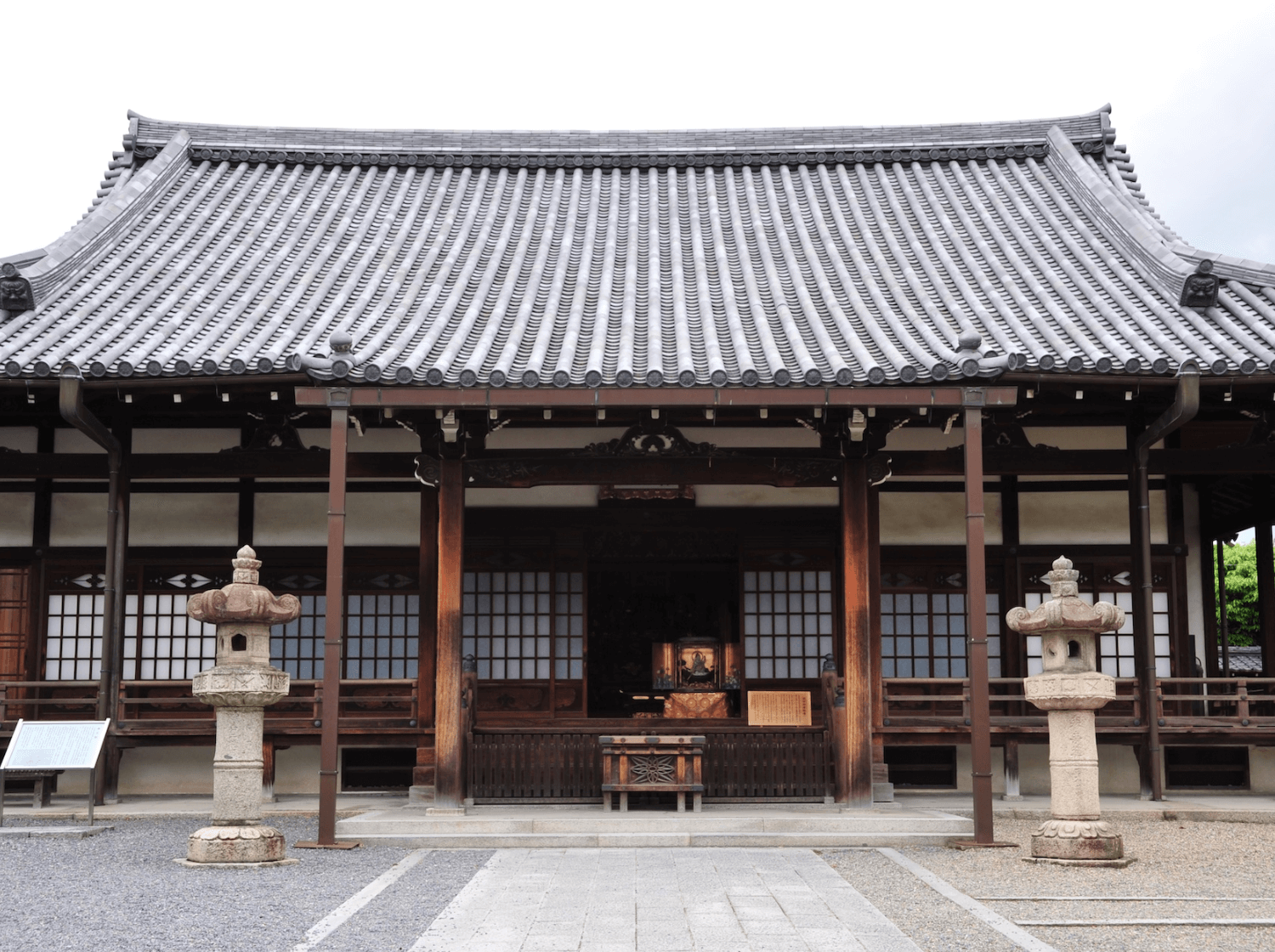Jodoin Temple, Rakando Hall, Funanori Kannon

Funds donated by the high-ranking Buddhist priest Eiku enabled the completion of the sub temple Jodoin in the 15th century when Byodoin was undergoing one of its earlier renovations. Jodoin houses a number of cultural properties, including statues of Amida (Sk. Amitabha) Buddha and the guardian figure Taishakuten, as well as door paintings in the Yorin-an Shoin Study.
The name Jodoin reflects the connection of the temple to the Pure Land (Jodo) School, which maintains Byodoin together with the Tendai School. Priests from Jodoin and its Tendai counterpart Saishoin began cooperating in the late seventeenth century. Their goal is to protect Byodoin and preserve this rare example of Heian period (794–1185) architecture for posterity.
A tea master named Hoshino Dosai built the Rakando Hall in 1640 along with his sons. A Cultural Property of Uji City that was restored in 2015, the hall contains sculptures of “arhats” (rakan), who were disciples of the historical Buddha who had advanced far along the path to enlightenment, though not to the level of the bodhisattvas. The hall has a brilliantly painted dragon on the ceiling, as well as other mythical creatures on the walls.
Jodoin houses a sculpture of Kannon (Sk. Avalokiteshvara), the bodhisattva of compassion, sailing on a boat. The Funanori Kannon depicts the bodhisattva rowing a small craft over a turbulent sea. The image served as an object of devotion for prayers for safe travel. It is richly executed in gold and blue. The original, dating from the Edo period (1603–1867), was stolen after World War II; the present sculpture was completed in 2003 to mark the 950th anniversary of the construction of Byodoin.

